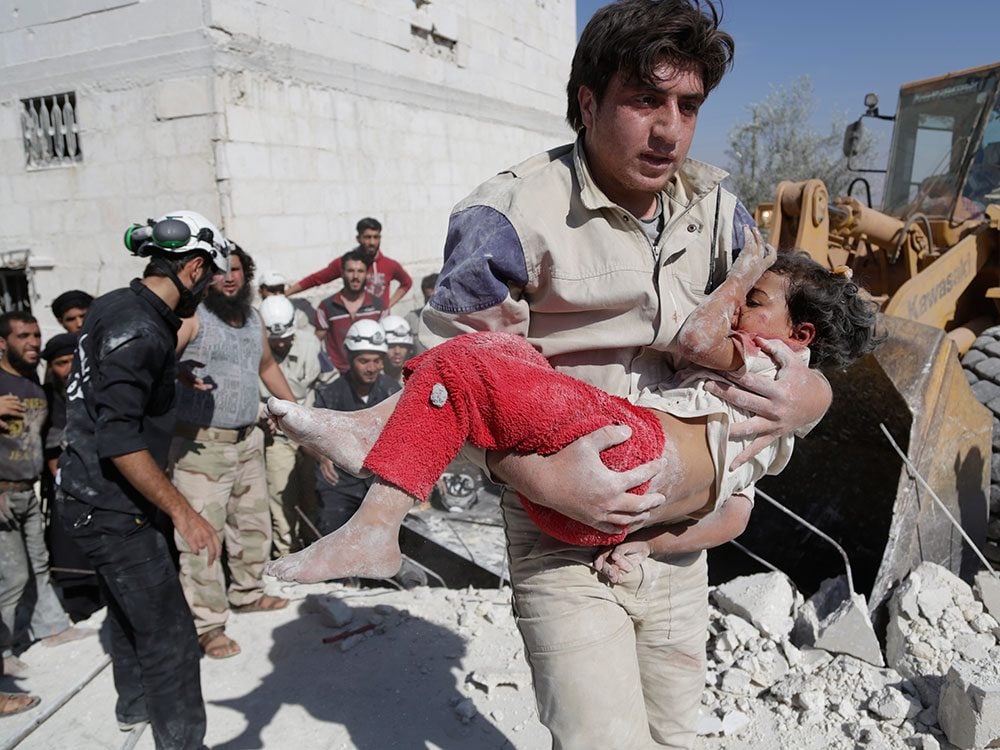
Rescuing the White Helmets
It was black as pitch on the Syrian side of the border and floodlit on the Israeli side when the curtain rose on a dramatic rescue. Out of the darkness in the Golan Heights they came—the famed White Helmets—the bankers and barbers and ordinary citizens known across the world for their courage.
Over the course of Syria’s seven-year civil war, these volunteer rescue workers had braved barrel bombings and chemical attacks to save more than 114,000 citizens who dared oppose President Bashar al-Assad. Singled out for torture and death by the regime, they came—exhausted and frightened, walking with their families up the grassy slope of Syria toward the forbidden border with Israel.
Shortly after 9 p.m. on July 21, 2018, the Israeli Defense Forces (IDF) gave the order: “Now.” The metal gate separating the two enemy countries cranked open. Four hundred and twenty-two lives were saved that night.
Meet the Canadian philanthropist working to save Syrian students.
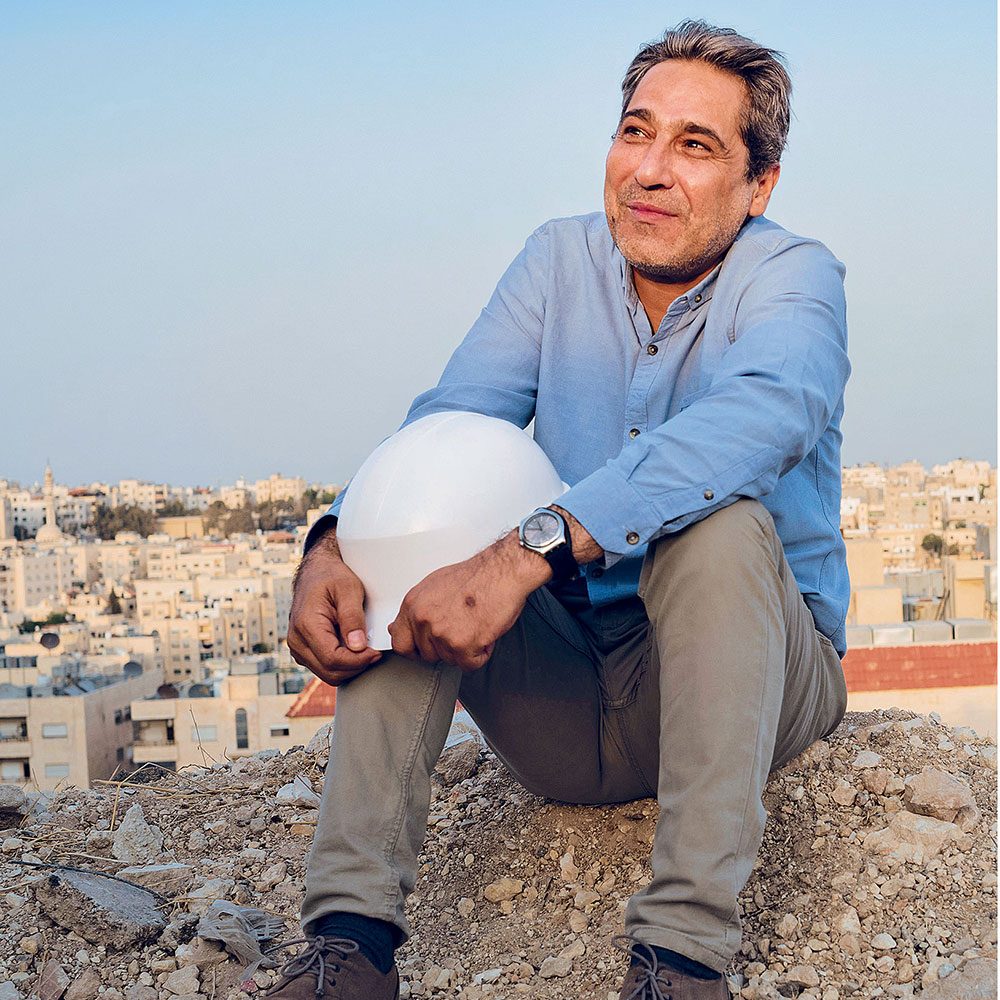
Canada steps in
“Canada played the leading role in an absolutely extraordinary international rescue operation that came together in a frenetic three-week period,” says James Le Mesurier, the founder of Mayday Rescue. (A not-for-profit foundation based in Jordan and Turkey, it assists the White Helmets, officially known as Syria Civil Defense, with training and development.)
For one exemplary initiative, leaders from half a dozen countries set egos and differences aside. “We witnessed the heart and core of Canada,” says Deborah Lyons, Canada’s ambassador to Israel. Her counterpart in Jordan, Peter MacDougall, believes that of all the files he’s covered, “This is number 1.” Major Efi Ribner of the IDF agrees: “This is one of the most significant things I’ve done in my military career. I’m very, very proud to have been part of it.”
But first, the background. In the fall of 2012, Assad’s government began attacking villages, towns and cities that were against his regime. His claim: any opposition to his autocratic rule was an act of terrorism. He withdrew all ambulance, fire and rescue services from areas not under government control, leaving citizens helpless. As bombs fell, there was no one to put out fires or help people trapped in the rubble. And when the attacks ended, there was no one to restart the electricity, reconnect water services or repair bridges.
That’s when groups of ordinary Syrians, first in Aleppo and Idlib and later throughout the rebel-held areas, united to respond. They gained experience in firefighting, rescue, trauma care and crisis management and learned how to restore services and rebuild bridges. They became known as the White Helmets, named for the colour of their hard hats.
After receiving training help from Mayday Rescue and funding from Canada, the United Kingdom, Germany, the United States, Japan and the Netherlands, what began as a high-octane neighbourhood watch had, by 2014, morphed into a movement of 4,200 volunteers working in approximately 150 rebel towns, villages and cities.
One volunteer who escaped Assad’s regime is Jihad Mahameed, 51 (picture above). A former accounts manager at a bank in Daraa, he has a friendly smile and a bitter understanding of the tactics used against his community. “I was the first employee dismissed from the bank because I was against the government,” he says.
He remembers the night in January 2013 that he became a White Helmet: “Our neighbourhood was hit with bombs. A woman was crying. She was injured and sure her baby was dead under the rubble.” Mahameed and his friends took the woman to the hospital and ran back to the site of the bombing to begin digging. “We found the baby, covered in dust and sitting in a corner of the building, looking like she didn’t know what had happened.” Mahameed tucked her into his arms, and the child clung to him until he was able to return her to her mother.
His colleague Farouq Habib, 37, is the White Helmets’ support-unit director and liaises between the group and Mayday Rescue. Before the bloodbath by Assad’s forces left almost 18,000 dead across the country, he was an investment banker in Homs. Like Mahameed, he was arrested, jailed and tortured for months by the regime. Like Mahameed, he doesn’t talk about that. Instead, he talks about rescue: “When the bombs explode, some people run to escape. Others run to help.”
Habib saw his house destroyed and his family displaced. After leaving prison, he was told to get out of Syria. From his temporary home in Amman, he thinks back on the evacuation of the White Helmets at the Golan Heights. “We didn’t aim to be refugees and leave our country,” he says. “We were looking to live in peace and dignity in our hometowns.”
Whenever danger struck, the White Helmets headed toward it—armed with stretchers, not guns. They became heroes. They also became the public enemy of Bashar al-Assad, in part because they were keeping people alive despite his bombardments, but also because they attached cameras to their helmets to record the chemical attacks and barrel bombings, gathering evidence of his war crimes. In retaliation, as areas fell to the regime, amnesty was offered to all but the White Helmets.
“All flavours of armed groups were eligible for reconciliation and for movement to other parts of [government-controlled] Syria,” Le Mesurier says, but not the White Helmets. “They were singled out, taken off buses, put into regime detention facilities. They were tortured, terrorized and forced to make video confessions alleging that they had been responsible for conducting atrocities. Some White Helmets were referred to as vermin that should be eradicated.”
They were also subjected to “double tap” operations: the regime would bomb an area, and when the White Helmets rushed in, a second bombardment would target the rescuers. But the worst assault came after the fall of the rebel-held areas in the south. Residents were told they had to fill out reconciliation forms, pledge allegiance to Assad and identify terrorists, mass graves and White Helmets. The first responders feared they would be arrested, tortured and disappeared. With 255 of their numbers already dead and more than 700 wounded, the risk was extraordinary.
That’s when Canada got involved.
June 28, Amman, Jordan
Nadera Al-Sukkar, Syrian country manager for Mayday Rescue, went to update Peter MacDougall, the Canadian ambassador, on the situation in southern Syria. She said they needed assistance in evacuating some of the White Helmets.
“I could see in her face the look of despair, even panic,” remembers MacDougall. He immediately phoned his colleagues in Ottawa who are responsible for Syria.
In the beginning, the rescue operation was driven by people in the field, such as Robin Wettlaufer, the head of political affairs for Syria. She became Canada’s face in that country in March 2014, when she was appointed as special envoy. Located in Istanbul, she’s been working with the White Helmets—arranging funding, training and support—for over four years.
July 3, Istanbul, Turkey
“Is there anything Canada can do to help us?” Ra’ed Saleh, the leader of the White Helmets, was meeting with Wettlaufer to let her know that the regime was advancing faster than anticipated and that his people were in trouble. He had thought the targeted men and women would have months to organize an escape route. In reality, they had weeks, maybe even days. Wettlaufer shared his concern—she understood well the trajectory of the Assad government and how it pursues territory.
And so Wettlaufer began working with Saleh and Mayday Rescue to draw up a list of White Helmets most in danger: the leaders, the female members and the ones featured prominently in the media. Those names were marked for evacuation.
Wettlaufer dispatched an urgent report to Global Affairs Canada in Ottawa, stating that there was a very real risk that those White Helmets could be detained or killed—it had happened before in Eastern Ghouta and in Aleppo. She felt that Canada was required to keep them safe: “We had funded them; we had worked closely with them; and we knew just how incredible their work had been. We knew how much Syrians rely on them.”
The response to her message was swift: yes, there was a responsibility to help.
In the meantime, the threatened White Helmets were on the run, finding safe routes to the borders, where a rescue might happen, concealing their identities, counting on strangers for clandestine help and staying in touch with Mayday Rescue through coded WhatsApp and text messages.
Read on to hear from peacekeeper and human rights crusader, Roméo Dallaire.
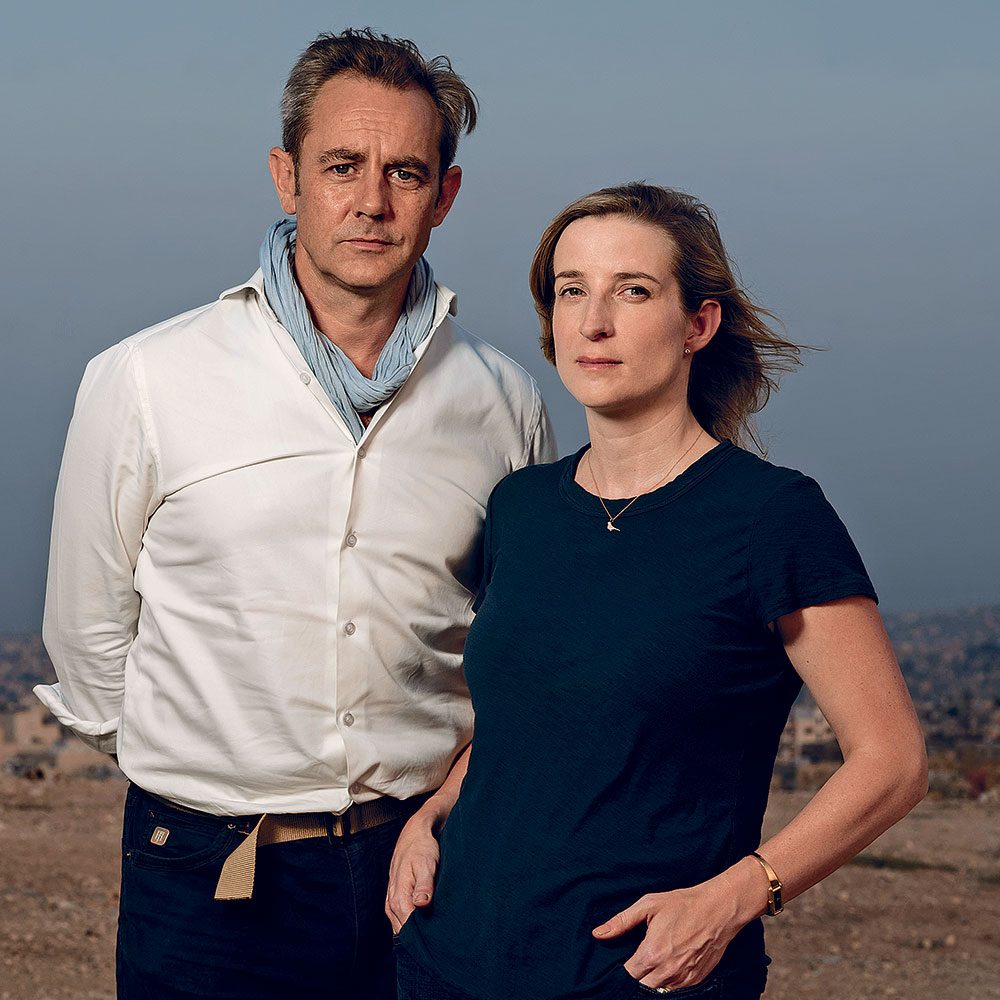
A race against the clock
July 11, Brussels, Belgium
At the NATO foreign ministers’ summit in Brussels, Canada’s minister of foreign affairs, Chrystia Freeland, stood up at a dinner event and allegedly pounded the table when she made an impassioned plea to the foreign ministers, saying, “We have to do something. We cannot leave the White Helmets behind. We have a moral obligation to these people.”
If a deal was struck, it also had to include resettlement. The United Kingdom, Germany and France responded positively to Freeland’s plea.
While the Brussels meeting galvanized the diplomats, politicians and aid workers involved, time was running out.
The tempo picked up, and the Mayday Rescue staff started preparing operations for the plan that would follow. There was still much to sort out, says Robin Wettlaufer (pictured above, with James Le Mesurier). “How are we going to do this? Which countries are on board? What do we need them to do? High-level diplomacy on the part of the Canadian government and the American State Department was essential in reaching out to people in the region and engaging the UN in discussions.”
Phone calls, WhatsApp messages and coded emails were connecting the dots of the rescue plan, 24 hours a day. The regime’s advancing army had closed off the border to Jordan, leaving the Golan Heights as the only crossing point available, which meant Israel had to agree to let them in. Jordan had to sign off on receiving the rescued men, women and children from Israel, even if only for a short stay. Buses to take the White Helmets from Israel to Jordan had to be organized. Meanwhile, Assad’s regime was closing off access routes from the south to the Israeli border. To further complicate matters, ISIS had started its own scrap for a piece of land that also cut off entry from the south.
According to Anthony Hinton, the deputy head of mission at the Canadian Embassy in Tel Aviv, the next steps to secure the crossing included engaging with the Israelis at a number of different levels. Then Prime Minister Justin Trudeau asked Prime Minister Benjamin Netanyahu for direct assistance. “This is a pretty sensitive issue,” says Hinton. “There was willingness to help right away. The first thing the Israelis needed to know was the immense scope of the problem. Once that was established, they went to work brainstorming different options. Israel was absolutely indispensable.”
Deborah Lyons adds, “To their credit, the Israeli government and military put human life ahead of politics and said, ‘We are there to help the White Helmets and to work with the rest of the coalition to get them out safely.’”
Now they were in a race against the clock.
July 19, Amman, Jordan
Mayday Rescue sent a coded message by text and WhatsApp to the White Helmets: “Head to the border with Israel.” The instruction seemed counterintuitive—Israel was an enemy border. But it was the only option available, so the first responders began moving from dozens of locations toward the Golan Heights.
Canadian and Israeli officials then worked to get identification documents for each of the vulnerable White Helmets from the Mayday Rescue office in Amman and to finish the vetting so the evacuation would go off without a hitch.
Find out why greeting Syrian refugees with parkas is the ultimate Canadian act.
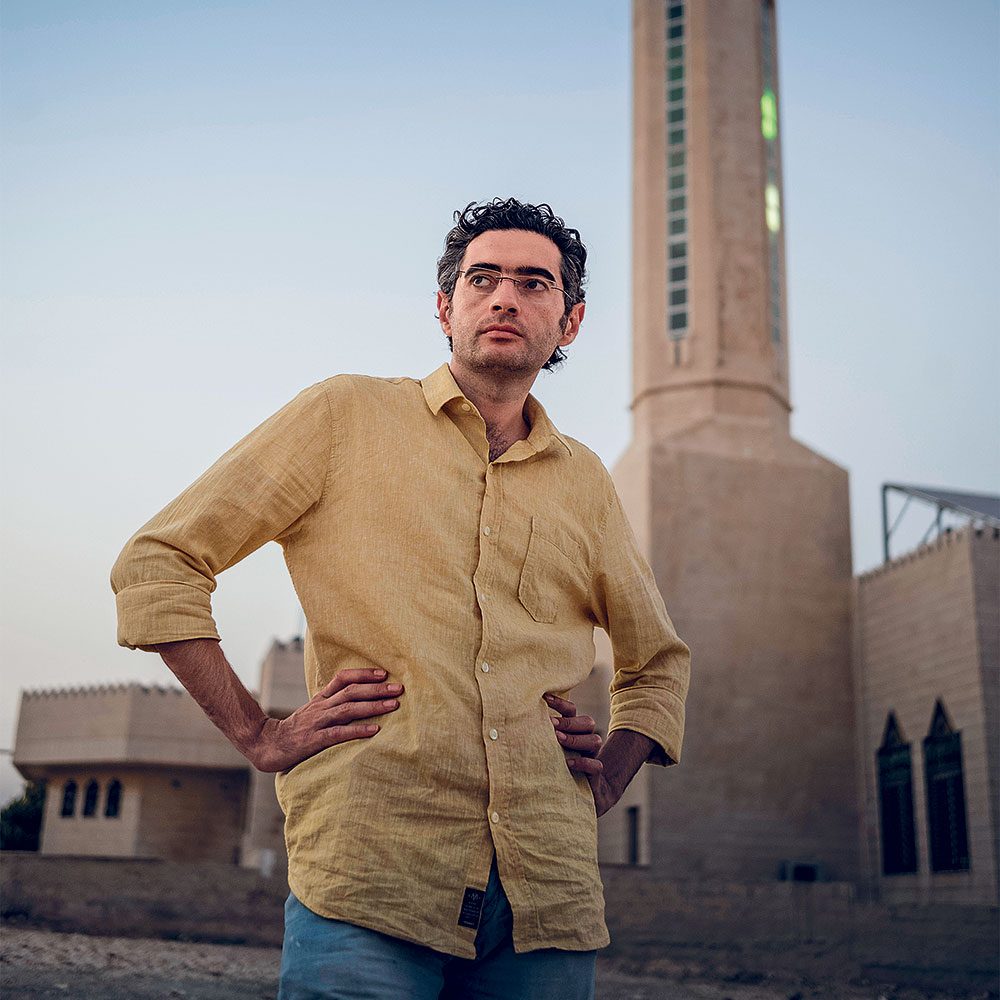
“This was our only shot.”
July 21, the Golan Heights
Occupied by Israel since the 1967 Six-Day War and tucked between two mountain ranges in the Valley of Tears, the Golan Heights is the de facto border between Israel and Syria. Here, neighbours who have become enemies watch each other from vantage points scattered about the hills. But on this night, the border would open briefly.
The plan was to unlock the gate, receive the White Helmets, process them and load them onto buses bound for Jordan. Representatives of the Jordanian government were there to observe the evacuation, as were UN officials. Mayday Rescue had sent two White Helmet members: Farouq Habib (pictured above) and Jihad Mahameed.
The anxiety level at the Mayday Rescue office in Amman, the Canadian Embassy in Tel Aviv and the foreign affairs office in Ottawa was palpable. So many things could go wrong. The regime’s military could catch wind of the top-secret rescue, charge the border and attack. Assad could call for an airstrike. Syrian citizens living nearby could seize the opportunity to cross the border when it opened, prompting a military response from the Israelis.
“Any one of those things would have meant we had to stop the operation,” says Wettlaufer. “This was our only shot. We had one last day to make it happen. We were incredibly worried, incredibly stressed.” The worst part was knowing that “something bad could happen to the White Helmets in the course of the evacuation.”
The IDF’s Major Efi Ribner says, “We take our security very seriously; there are many different terrorist organizations on the other side who are not particularly fond of the state of Israel, who could take advantage of the situation to attack us or the Syrians trying to come across.”
The IDF had coordinated the time and place where the White Helmets would come across the border with the Canadian Embassy and the Mayday Rescue team. Just before sundown, the IDF deployed in full battle gear, machine guns shouldered. They set up a table where each evacuee would be identified. When the sky was dark, the order was given to open the gate; as it cranked slowly to a position that exposed the Syrian hills, everyone stared into the night. Then Ribner called the White Helmets to come forward as families—one group at a time. If people were on their own, they were to approach as individuals. The control was tight.
Except for gunfire in the distance (likely the sound of ISIS grabbing territory), the night was eerily quiet. The White Helmets moved toward the gate. “I saw frightened people approach the Israeli-Syrian border carefully, not really knowing where to go or how to conduct themselves,” remembers Ribner. “We had people who speak Arabic to give them a sense of security.”
Habib and Mahameed were the first familiar faces the White Helmets saw. “When the first family crossed, it was an exceptional moment,” Habib recalls. “I had mixed feelings—sadness because this family was forced to leave their homeland but happy because we rescued them. I hugged their baby.
It made me think of my own son. I felt that all those children out there waiting with their parents were like my son. The mother was crying, so was the father. Then all three of us were crying.”
The families were in miserable condition—some sick, some barefoot. A pregnant woman had broken her leg at one of the crossing points. One mother asked if Habib could get milk for her child. A man begged Habib to negotiate safe passage for his wife and children, left behind. There was a newborn baby, delivered two days earlier.
The rescued families rushed to Mahameed, embracing him, asking questions, seeking answers. He hugged them back but discouraged lingering. “I just wanted them safely on the bus,” he says.
Here, former prime minister Jean Chrétien on why he’s proud of Canada’s stance on Syria.
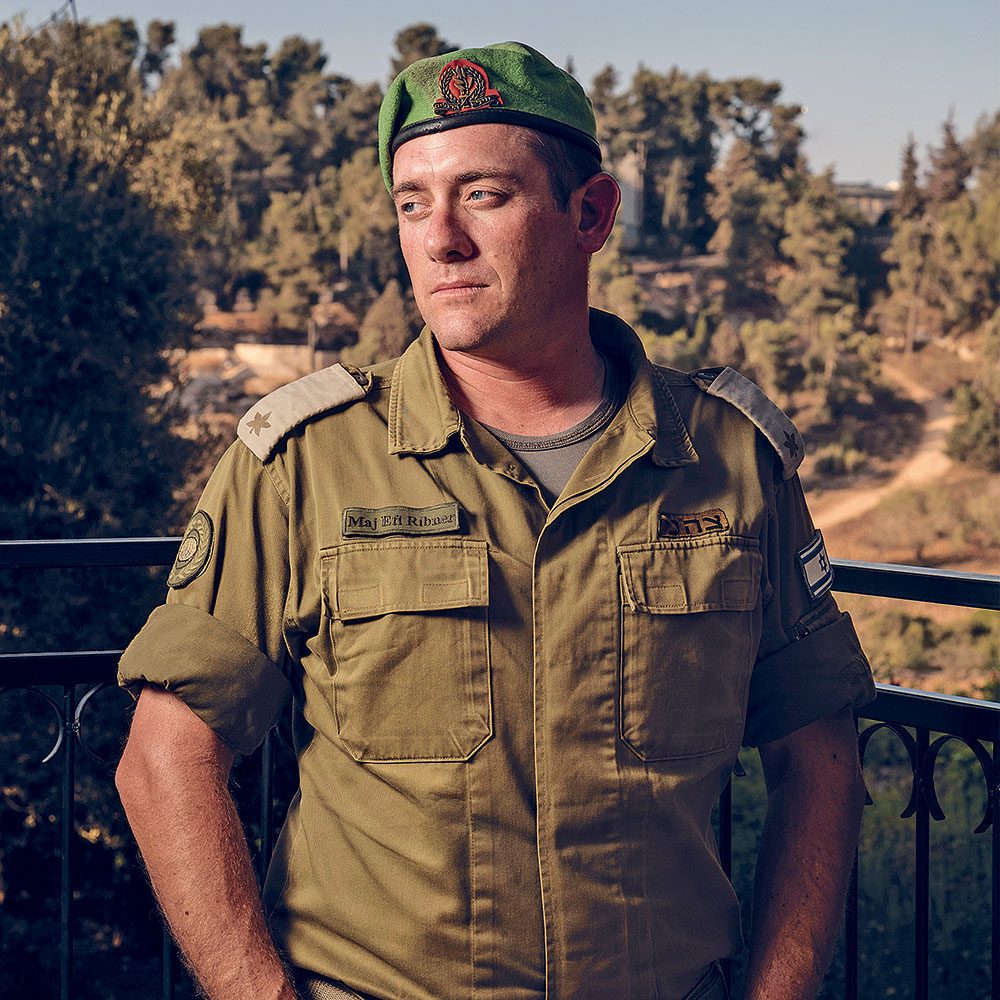
“Thank you for the miracle.”
Weeks later, Major Ribner (pictured above) was asked to share the story behind a photo of him holding one of the White Helmets’ swaddled infants. “The baby’s mother had left her ID at the checkpoint. She put the baby on the registration table and rushed back to retrieve her documents. The baby was crying, so I carried the child until the mother came back.”
As each family cleared security, they were moved to buses where blankets, food, baby formula and water awaited them. When all 10 buses were filled, they left in a convoy for the Jordanian border.
In Amman, the Mayday Rescue office was crowded with envoys, ambassadors, aid workers and UN refugee staff, all of them working the phones, checking WhatsApp, maintaining contact with their offices and waiting for news from Habib and Mahameed. The room was powered by cigarettes, coffee and anxiety. Shortly after 9 p.m.—half an hour later than anticipated—came the call from Habib. The White Helmets had started to cross.
“As the night progressed, it became clear—this just might work,” says Wettlaufer. “But until we found out that the last person was safe, I didn’t relax for a second. No one in that operation centre did.”
Nadera Al-Sukkar of Mayday Rescue felt the pressure keenly. “We lost touch with Farouq and Jihad at some points, so the stress escalated. We also lost contact with the [White Helmets]. Morale was collapsing. All of us were worried that it’s not going to happen, that it’s too complicated, too difficult.”
At the Canadian Embassy in Tel Aviv, Hinton and his colleagues were receiving updates from the IDF. Some of the Syrians, such as children born after the civil war began, lacked documentation. Others had lost passports in the fracas of war. But each case was worked out and no one was turned away.
However, out of the approximately 800 White Helmets and family members expected to escape, just slightly more than half made it to the Golan Heights—many couldn’t get past the various checkpoints across Syria and went into hiding. “We were hoping to save many more, but it was a war zone,” says Hinton, “a dynamic situation unfolding literally as the regime was working to retake the territory.”
It was 5 a.m. when the last buses arrived in Jordan.
August 28, Amman, Jordan
Reflecting on the operation, Wettlaufer says, “It had about a two per cent chance of success. It was mission impossible. They were pinned between an advancing regime and ISIS forces, against two sealed international borders in one of the most politically sensitive regions of the world. There was no way this should have worked. And yet it did. It did because of a committed minister, Chrystia Freeland, prepared to make a tough decision and do the right thing. It did because of a range of officials in the field and in Ottawa who were seized by the matter and wanted to do the right thing. And it worked because of incredible, coordinated international diplomacy.”
When Al-Sukkar caught up with the White Helmets at the undisclosed location in Jordan where they were being processed for resettlement, she began to realize the enormity of what had been accomplished. Their first words to her were “Thank you for the miracle.” They expressed sadness and concern for the teams left behind, but they also said that for the first time in a long time, they felt safe.
One man told her that when he woke up after falling asleep in a chair, he noticed that someone had put a blanket over him. Another said, “The nightmares have stopped.”
The rescuers had been rescued.
Journalist Sally Armstrong and photojournalist Peter Bregg travelled to Jordan and Israel in August 2018. This story is a co-operative venture between Reader’s Digest and The United Church Observer and will also appear in The Observer’s January 2019 issue and on ucobserver.org.
Looking for more drama in real life? Don’t miss this miraculous survival story.